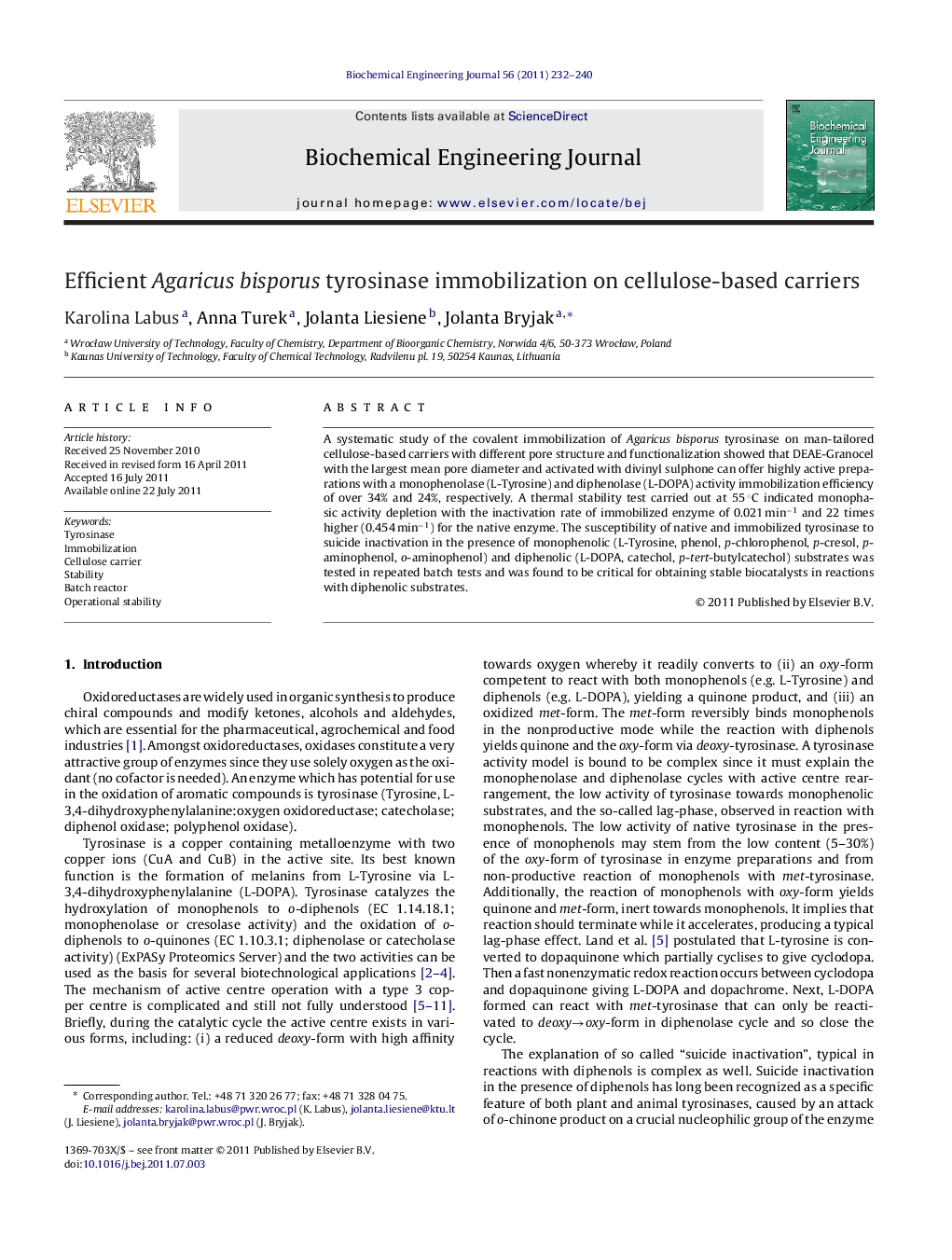| Article ID | Journal | Published Year | Pages | File Type |
|---|---|---|---|---|
| 3721 | Biochemical Engineering Journal | 2011 | 9 Pages |
A systematic study of the covalent immobilization of Agaricus bisporus tyrosinase on man-tailored cellulose-based carriers with different pore structure and functionalization showed that DEAE-Granocel with the largest mean pore diameter and activated with divinyl sulphone can offer highly active preparations with a monophenolase (L-Tyrosine) and diphenolase (L-DOPA) activity immobilization efficiency of over 34% and 24%, respectively. A thermal stability test carried out at 55 °C indicated monophasic activity depletion with the inactivation rate of immobilized enzyme of 0.021 min−1 and 22 times higher (0.454 min−1) for the native enzyme. The susceptibility of native and immobilized tyrosinase to suicide inactivation in the presence of monophenolic (L-Tyrosine, phenol, p-chlorophenol, p-cresol, p-aminophenol, o-aminophenol) and diphenolic (L-DOPA, catechol, p-tert-butylcatechol) substrates was tested in repeated batch tests and was found to be critical for obtaining stable biocatalysts in reactions with diphenolic substrates.
► We investigated tyrosinase immobilization on synthesized cellulose-based carriers. ► Covalently bound enzyme was 22 times more stable than native tyrosinase. ► Operational stability was tested with 6 monophenolic and 3 diphenolic substrates. ► Repeated batch tests confirmed suicide inactivation caused by diphenolic substrates.
